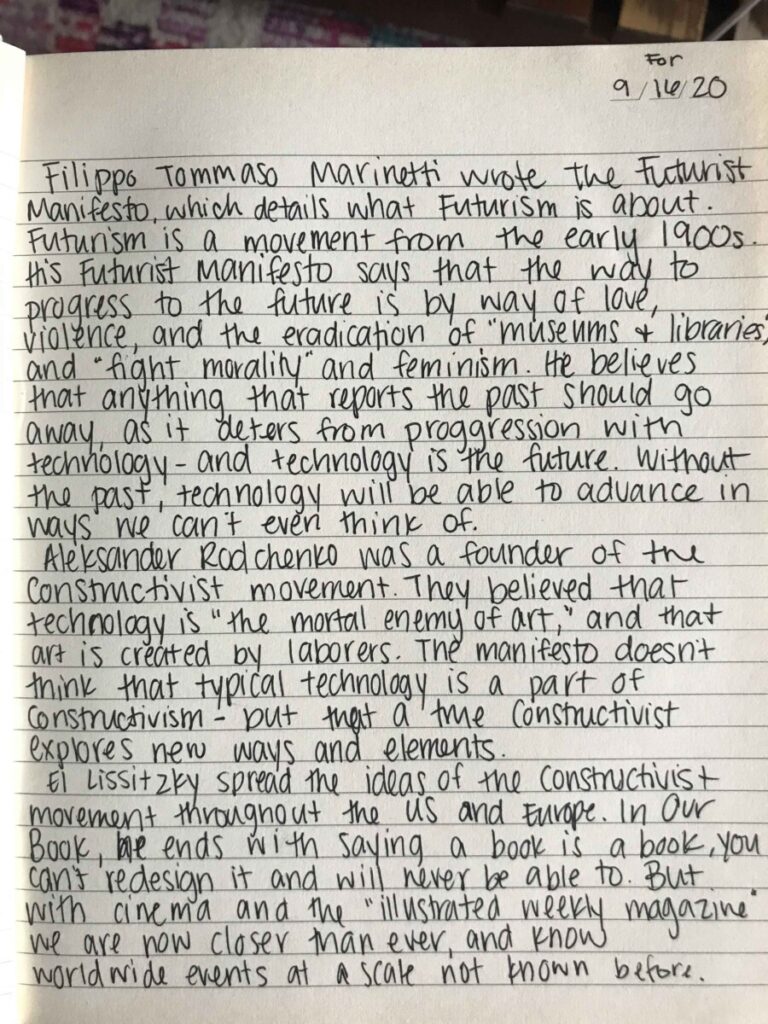In the first article by Marinetti, they seem to envision that the future will and should be fill with many talented artist and designers from around the world. Many who will do what they please and how they please without having to rely on the past of art but instead make their own. Forging their own styles and ideas instead of building off of the old traditional ways of art and design. They seem to believe technology was going to play a big part in the future with how we move on with everything including art. Where it will be the start of something new to leave behind the old traditional styles and instead start a new.
Lissitsky seems to be on board with the idea of technology advancement. They understand that without it, there are plenty of things we wouldn’t have today and around us that wouldn’t exist without such advancements. That the future will constantly moving forward but that we will always learn techniques that are apart of the future but as well apart of the past. They don’t seem to be against technology at all but more for it. Believing that the teachings of both old and new traditions will bring artist and designers together more than the past did.
The Constructivists seem to also envision the future to be filled with technology advancement. They saw the future filled with it to the point where we start to rely on it more than relying on our own. They didn’t seem to be completely against it but instead that they’re against how we as humans are going to rely on it so much to create everything that we used to be able to make with our bare hands and our own skills. From my understanding from all three text they all believed in the same vision of the future and that it was going to be filled with technology and how we are going to use it how ever we wanted to the point that we make some work a lot easier for our lives. The only elements I found problematic is how the Constructivist is against the idea of technology. Even though it is true that it will make work for humans a lot easier in many different ways. It will still take a human mind, and humans skill in art, and the human hand to make those tools that make thing easy for us to make that happen. No matter how far we go into the future we will always have to use some sort of new tool to make art and design with what we were taught in the past and what we learn in the present day.




Recent Comments